Description of the types and varieties of dieffenbachia
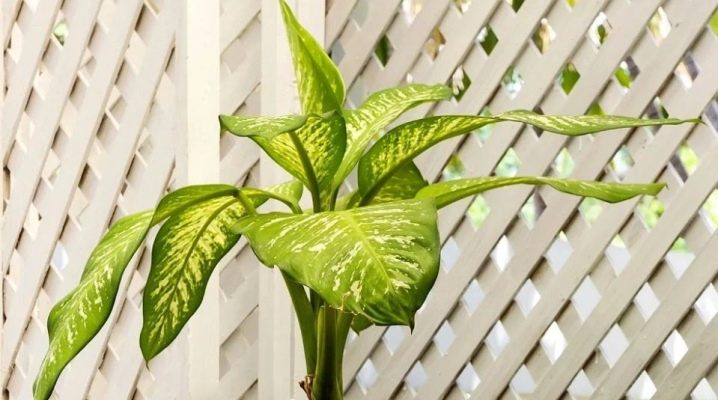
In nature, there are about fifty varieties of dieffenbachia. It is believed that the flower got its name in honor of the botanist who first began to propagate it in Europe. His name is Joseph Dieffenbach. In Europe, namely in the Austrian Botanical Garden at the Royal Palace, the flower was brought from North America.
Since the homeland of the plant has a subtropical climate, which is radically different from the European one, Dieffenbachia is considered a capricious and fastidious plant. Most varieties are not suitable for growing outdoors, but as a houseplant, this flower is in great demand.
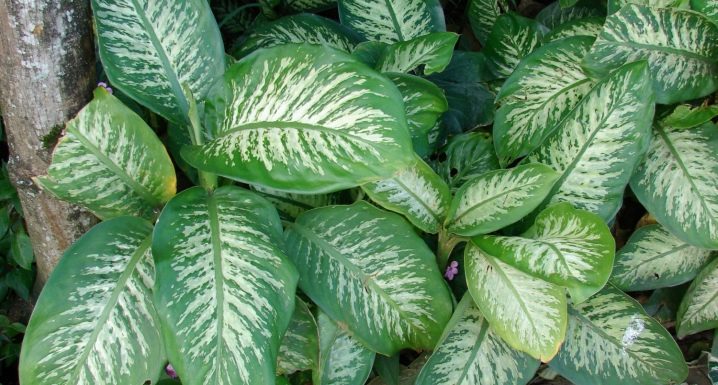
Peculiarities
At home, dieffenbachia is considered a weed that harms crops, so it is uprooted. In addition, the juice of the stems is very dangerous for humans. The stems of this herb were used as rods during slavery. They are quite elastic, in addition, they are also contain poisonous juice. On contact with the skin, the juice causes a strong burning sensation, and if it enters the mouth, it can provoke laryngeal edema and numbness.

As a punishment, the guilty employee could be forced to chew a dieffenbachia leaf, and his voice was taken away. This method of punishment was very popular among slave owners - the worker did not receive serious physical injuries and could work, but the punishment continued to operate. Because of this, the plant received the name "dumb rods". At high doses, blindness can occur, so it is not recommended to breed dieffenbachia where there are children or animals.
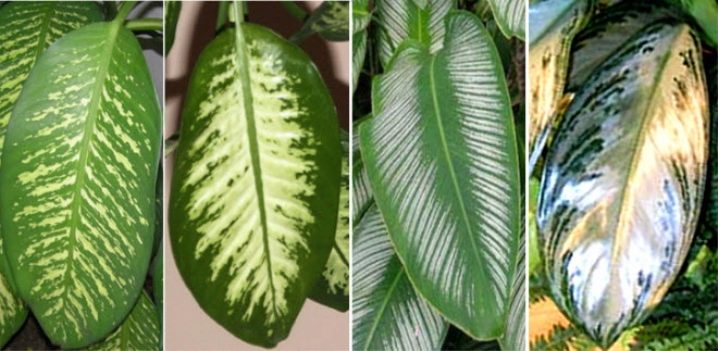
When working with a flower, you should protect open areas of the body, wear gloves and glasses. At the end of the work, you must thoroughly wash your hands and, if possible, disinfect the surfaces and objects with which this plant came into contact.
But where there is no risk of poisoning, the flower can become a pleasant addition to the interior. The plant attracts amateur flower growers with its rapid growth. In just a year, Dieffenbachia can grow from a small shoot into a rather powerful bush half a meter high, and sometimes more. The leaves are long and wide, grow back very quickly and can reach 30 cm. Their front side has a shiny surface with a leathery structure and white and yellow rays coming from the middle of the leaf.
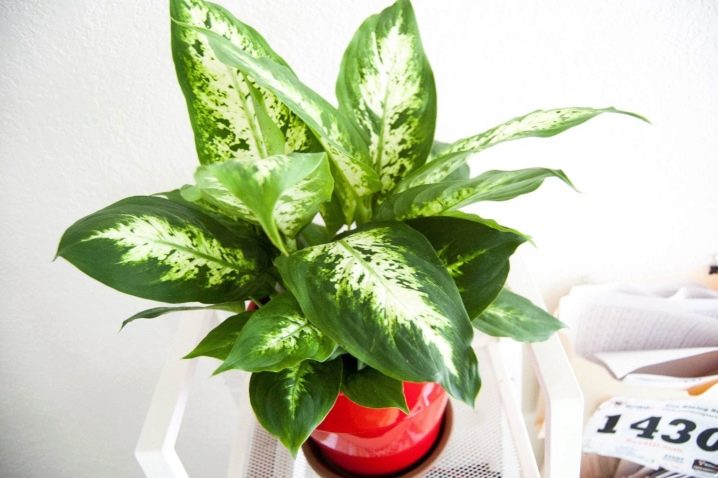
Like any other plant, Dieffenbachia absorbs carbon dioxide and gives off oxygen. In addition, this plant is able to absorb odors and serves as an air purifier. Therefore, it is recommended to keep it in houses located near highways, as well as near industrial facilities. In addition, dieffenbachia kills many disease-causing bacteria, such as staphylococcus bacilli. Since it is a moisture-loving plant and requires constant spraying, the air in the room is humidified, which reduces the amount of dust and has a particularly positive effect on the health of allergy sufferers and asthmatics.
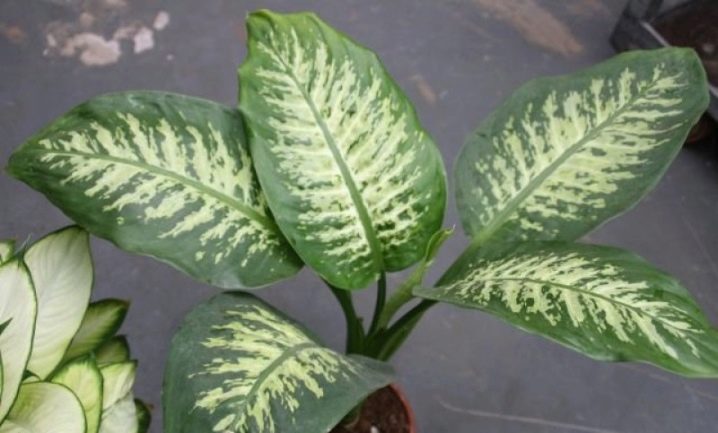
There is a belief that a flower helps in business. It is believed that dieffenbachia adjusts thoughts to a business mood, helps to make balanced and rational decisions, and brings good luck in money matters. Therefore, she can often be found in office premises... In addition, it is believed that the flower helps women maintain beauty and health, especially those who care for it. Some housewives notice positive changes in their appearance and well-being.
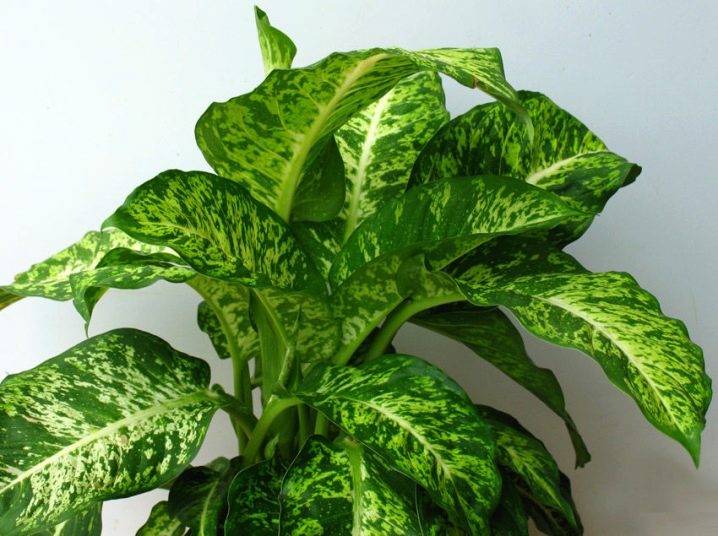
But dieffenbachia is not as supportive of men as it is to the beautiful half of humanity. Some people believe that the plant is bad for male strength and can even deprive a man of fertility. There are even those who claim that a flower can push a man to leave the house.
Whether this is true or not is not known for certain, but just in case, this plant should not be kept in the bedroom, but in a business office or in the living room it will have its very place.
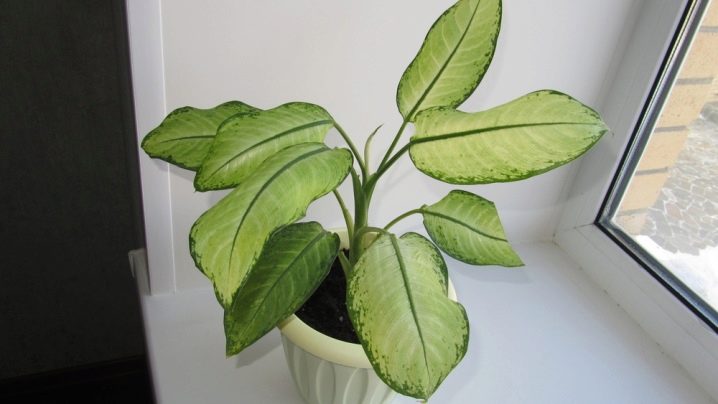
Dieffenbachia blooms at home extremely rarely. This requires a special microclimate, which is almost impossible to create in a city apartment. Dieffenbachia releases new buds in the spring - around May. The flowers are faint, usually white or green. The plant spends a lot of energy on their formation and, as a result, sheds its leaves faster. Therefore, experienced growers cut the flowers a few days after they bloom.
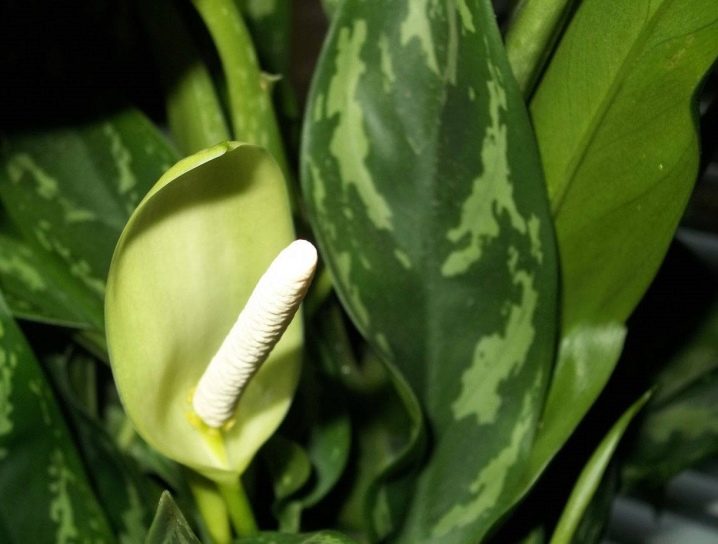
Reproduction
Dieffenbachia in nature propagated by seeds... The blossoming dieffenbachia bud has inflorescences of both sexes. Females are located at the bottom of the flower, and males are at the top.
After the flower dies off, bright red or orange berries appear in it (depending on the variety). They are collected and planted in the soil. In nature, the flower is pollinated independently, but at home you have to do it artificially, which is not always effective in practice.
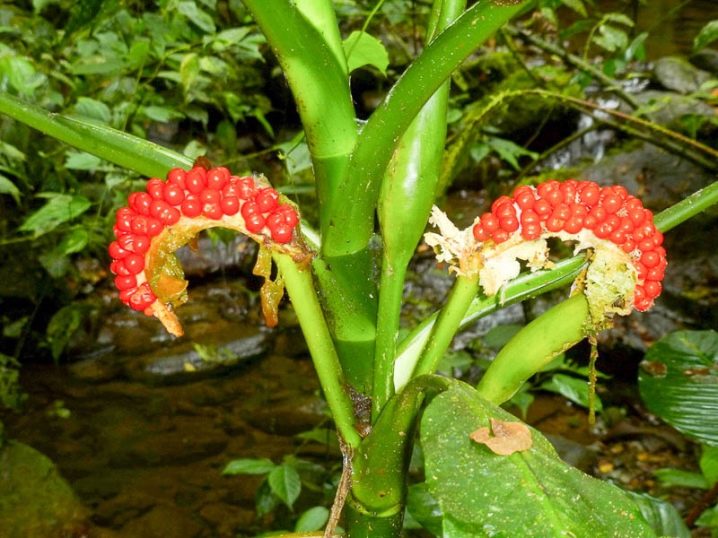
In addition, a plant cannot always bear fruit in an apartment. Therefore, indoor plant varieties most often propagated by cuttings... In addition, this is also a great way to create several young and fresh shoots from one old and not very attractive plant. The stem of a plant with buds is cut into several pieces of 5–6 cm each and placed in plain water or planted in moist soil.
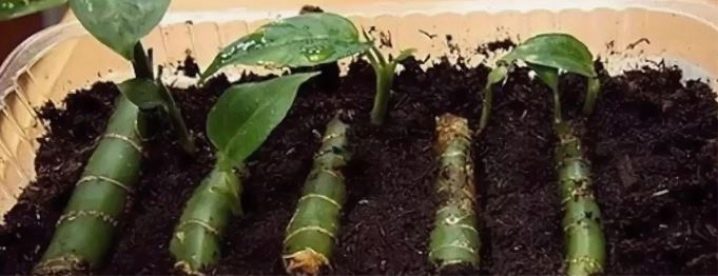
Practice shows that cuttings take root easily, and almost all parts of the stem germinate - both the stump with the root, and the middle, and the top. The main and prerequisite is the presence of a dormant bud on the handle.
Main types and varieties
Despite all the variety of Dieffenbachia varieties, it is customary to divide them into two main subgroups.
- Tree dieffenbachia outwardly resembles a palm tree, as it has a single strong trunk. As the upper leaves grow back, the lower ones begin to die off, only the top with large long leaves remains.

- Bush dieffenbachia has a branched stem shape. Usually it does not reach the same height as a tree, but it has a lush shape that resembles a bush. Leaves begin to grow at the very base of the trunk.
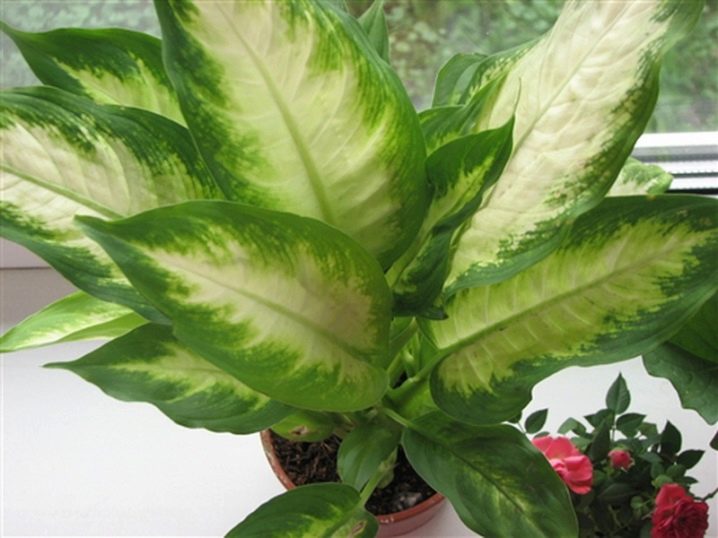
Consider a brief description of the most popular dieffenbachia varieties. Several varieties belong to the group of tree-like plants.
- "Amoena" (Amoena). This variety is also known as Dieffenbachia adorable. The leaves are rounded with white veins radiating outward from the center. She is afraid of drafts, drought and spider mites.

- Seguine. It is often confused with the Amoena cultivar. The difference is that it has more leaves, which are also larger than their relative.

- "Maculata". It is also known as spotted. The flower got its name, probably because of the large variegated leaves, which look as if they were splashed with white paint. The plant itself can grow up to 1 meter in height, after which it stops growing.
When flowering, ears appear with one petal of a pale green color. This variety bears fruit with round red or orange berries.

- "Maroba" (Maroba). This plant has large leaves about half a meter long with a shiny ribbed surface and variegated color. With good care, it can grow up to 3 m. This variety loves abundant watering and regular pruning, blooms once a year for 3 weeks.

As examples of bush dieffenbachia, there are several of the most famous varieties.
- Oerstedi. This variety is characterized by a large number of strong stems and dense leaves with a glossy surface.
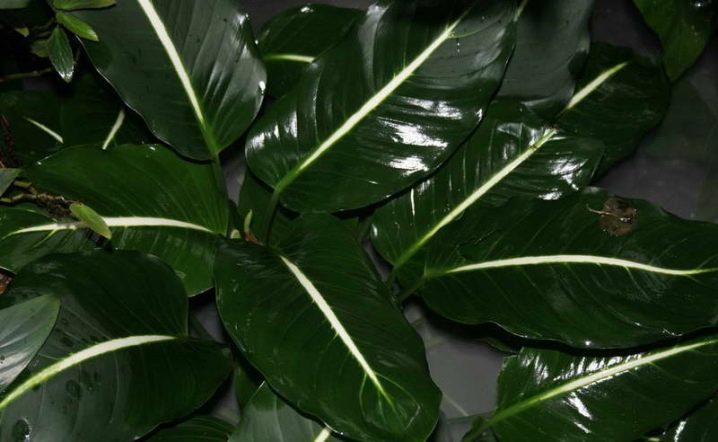
- "Compacta" (Compacta). It is a low-growing shrub with dense bright green leaves that does not grow taller than 65 cm. In the middle of the leaf there are white and beige intermittent strokes.
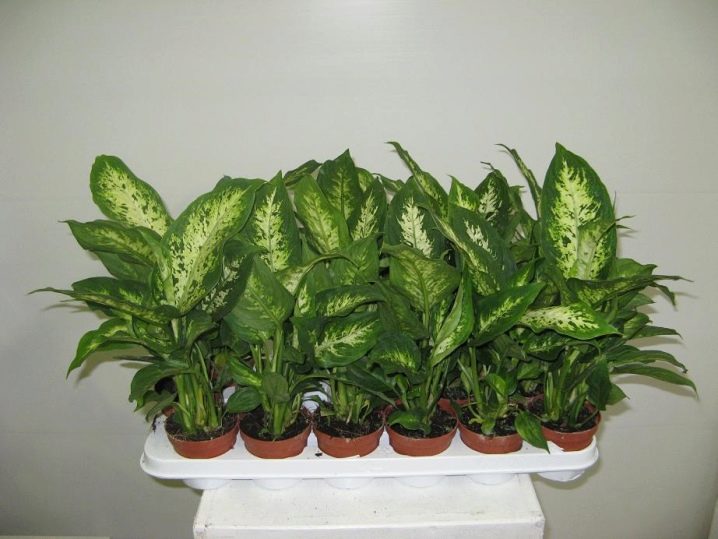
- Sublime. The height of the plant can reach from 50 to 100 cm. The flower easily tolerates a lack of light, but requires abundant and regular watering.
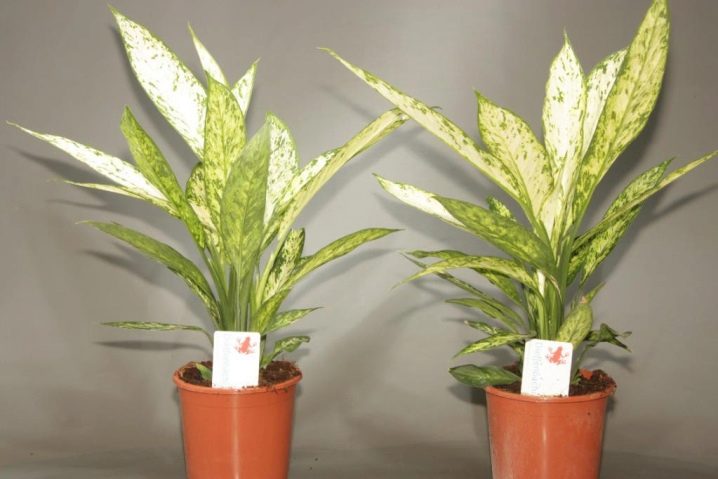
- "Mix" (Mix). It is a low-growing variety with a fairly varied leaf color. A wide green edging is presented along the edges, and in the middle there are yellowish veins, sometimes merging into one uneven spot.

- Camilla. This is one of the most popular and beautiful varieties of dieffenbachia. It is easy to recognize by the peculiar color of the leaves of a milky white color with a light green edging. The white color decreases as the plant grows, giving way to green.

- "Segiuna" (Cegiuna). This plant belongs to the category of bush, while it has a strong tree-like trunk. The leaves are large and fleshy, with a few whitish veins. It can be distinguished as a separate species, since several hybrid varieties originated from it. The most popular one is Green Magic.

- Bausei refers to semi-shrub. Due to its rapid growth, the flower can stretch up to a meter in height. The plant is very fond of light and moisture, so it is recommended to regularly wipe the leaves with a damp cloth and transplant dieffenbachia every 2 years.
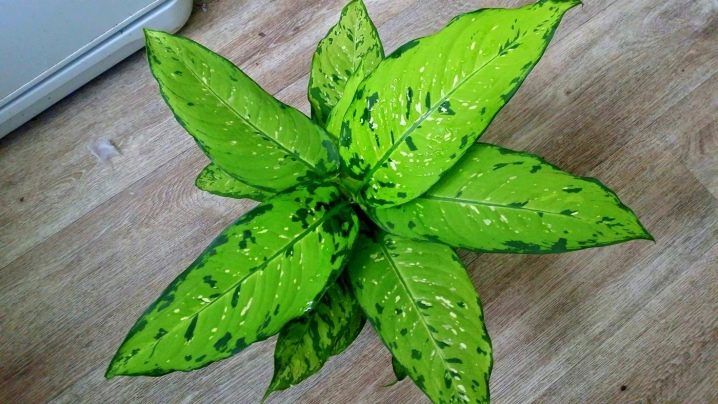
- Reflektor. The flower is recognizable due to the peculiar color of the leaves, reminiscent of a camouflage uniform. The plant does not like cold and drafts, while it feels great in direct sunlight.

- Tropic Snow. Literally translated, it means "tropical snow". Indeed, the leaves of the plant look like they are powdered with small fluffy snowflakes, which have already begun to melt slightly. Behind the oval leaves of the shrub, its stem is practically invisible.
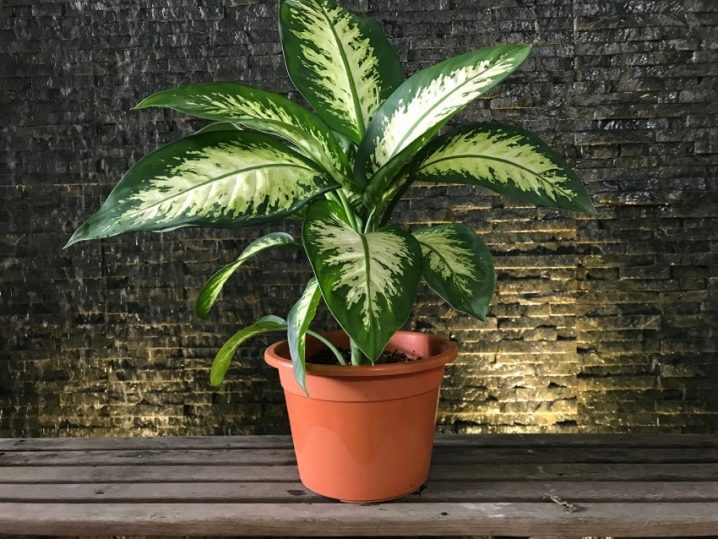
- Mars. This is a plant with spotted leaves of a rich green color with white-yellow veins. It grows up to 70 cm long, does not like cold and drafts.
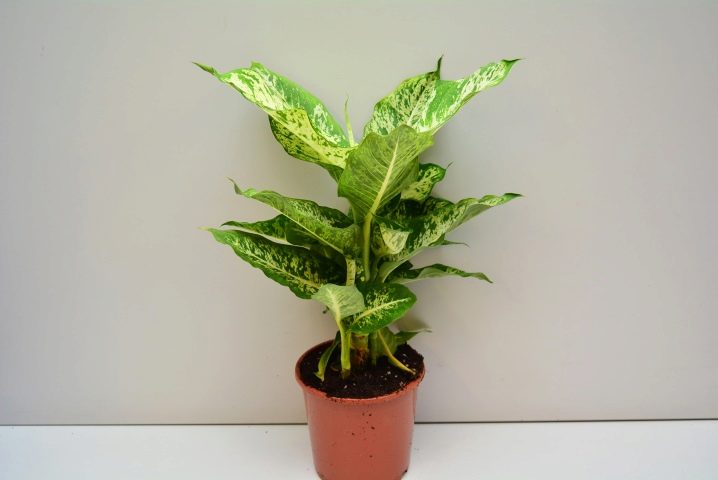
- "Leopold" (Leipoldii Bull). This variety is distinguished by its short stature - the stem rarely grows above 5 cm, so the flower can be placed on a windowsill or on a desktop. But the leaves of this variety are quite large, their length can reach 30 centimeters or more. The color is pale green, with a white vein in the center and with lavender petioles.
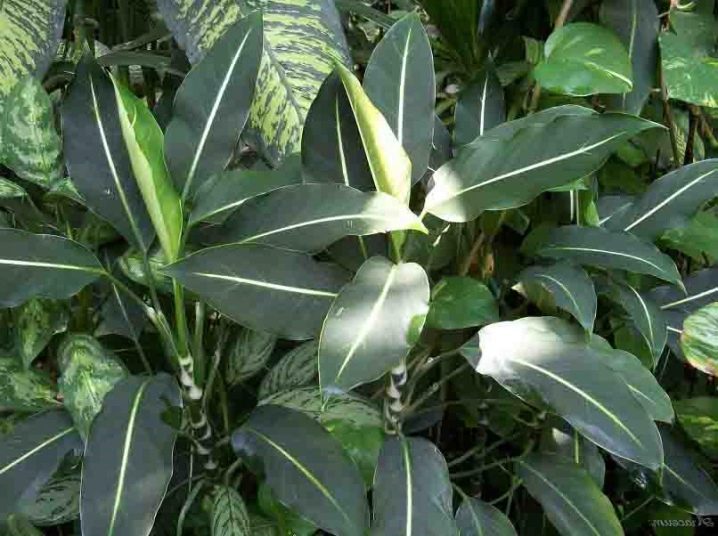
How to choose?
As you can see from all of the above, there are so many varieties of dieffenbachia that you can simply get confused in them. They differ not only in the size of the plant itself, but also in the shape, color and size of the leaves. For general convenience, the plants were divided into two main subgroups - small-leaved and large-leaved.
Before you buy a vending dieffenbachia flower, you should make sure that you have a viable specimen in front of you. Healthy individuals have white roots.
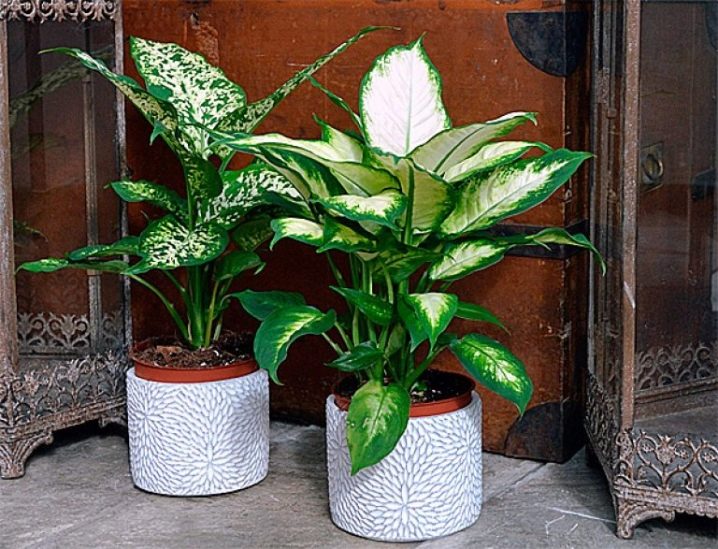
When buying, you should also consider and potential plant growth, some of which can grow up to 2-3 meters. If the size of the room allows you to have such a large plant, you can safely choose the variety "Mars" or "Amoena". They look very impressive. in country houses, lobbies of cinemas, offices and other public places.
For a small city apartment, bush varieties are recommended. Many of these varieties do not grow too much in height, for example, "Mix" or "Sublim" grows only up to 40-50 cm.
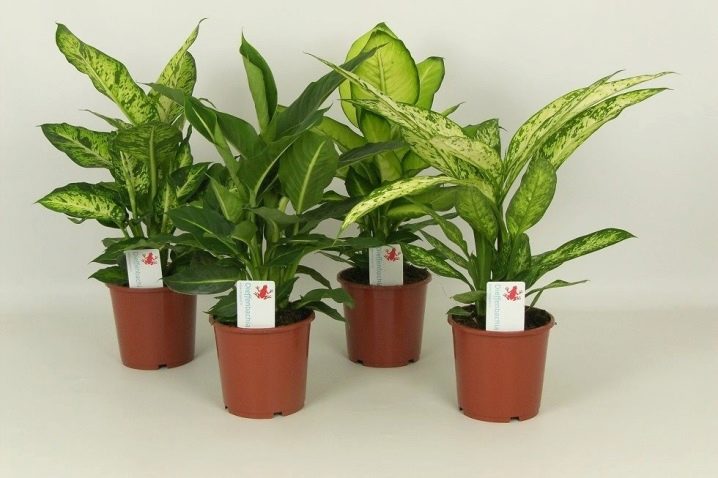
As you know, Dieffenbachia comes from a tropical climate, so almost all varieties cannot stand cold and poor lighting. All pots with plants must be wrapped in a transparent film that protects the flower during temporary storage. If you are purchasing dieffenbachia for aesthetic reasons, it is worth looking at small bush varieties.If you want the plant to also bring benefits (meaning its cleansing properties), it is better to choose varieties with large leaves. The larger their surface, the more bacteria they absorb.
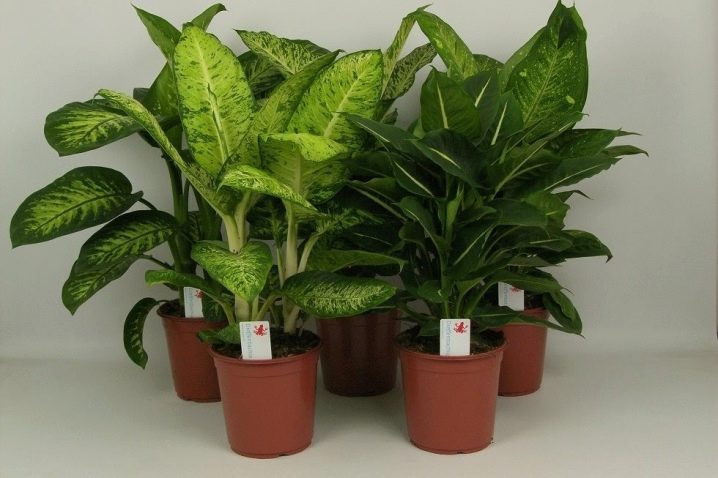
And in order to reach a compromise on this issue, you can plant two plants of both types in one pot - it will turn out very effectively.
For information on how to care for dieffenbachia at home, see the next video.



























The comment was sent successfully.